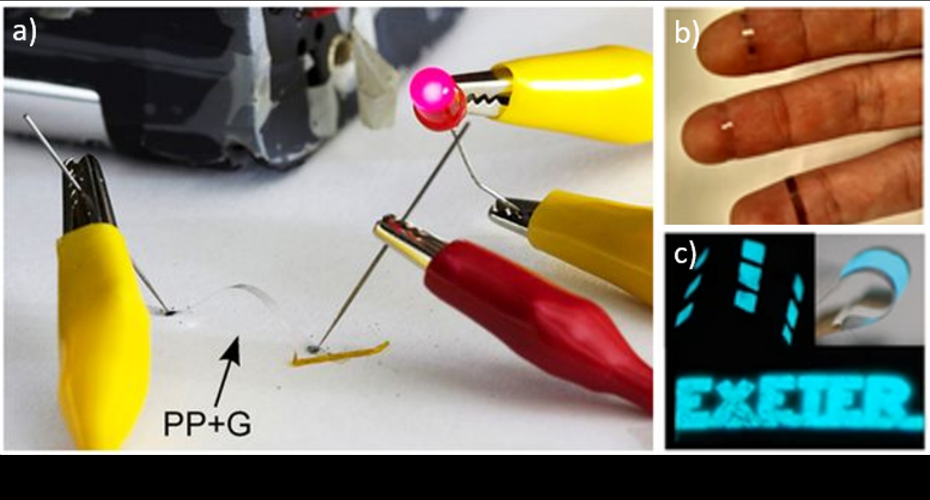Wearable electronics - From internet of things (IoT) to human-machine interfacing
A case study by Kavya Sadanandana and Ana Nevesa
aUniversity of Exeter
The problem
Textile-based wearable electronics is an emerging technology with potential to enable the imperceptible integration of electronics with the human body. Electronics incorporated into clothing will play a strategic role in various areas ranging from the internet of things (IoT) to remote health monitoring, medical therapies and human-machine interfacing. However, to enable such advances, there are many engineering challenges that still need to be overcome. Future technologies will need to take more important roles in people’s lives and this requires imperceptibility (for longer term use), capability of bending (to conform to body topography) and of stretching (to accommodate natural body motion). Therefore, advances in large-area integration and conformal lamination onto the irregular, non-flat, and coarse structures of the textile fabrics are necessary.
Our solution
From a materials-based approach, the use of extremely thin 2D materials, with only few-atom thickness, resulting in extreme flexibility and high fracture strengths, constitutes the most effective strategy to achieve ultimate mechanical robustness of electronic devices for textile integrated electronics. For example, graphene, one atom-thick carbon layer, exhibits outstanding mechanical, electrical and optical properties due to its soft carbon-based nature, high carrier mobility and ultrathin form factor. The biocompatibility and large-scale graphene processibility further facilitate applications for wearable electronics.
Why use a metamaterial?
This type of graphene layer stacking, patterns printed on the surface etc. helps to manipulate its properties to match the desired range of application. Fabricating these new structural designs is the metamaterial aspect, and the base of this project towards the realization of wearable electronic devices.
References
[1] Neves AIS, Bointon TH, Melo LV, Russo S, de Schrijver I, Craciun MF, Alves H. (2015) Transparent conductive graphene textile fibres, Scientific Reports, volume 5, pages 9866-9866
[2] Torres Alonso E, Rodrigues D, Khetani M, Dong-Wook S, De Sanctis A, Joulie H, de Schrijver I, Baldycheva A, Alves H, Neves AIS. (2018) Graphene electronic fibres with touch-sensing and light-emitting functionalities for smart textiles,
npj Flexible Electronics, volume 2, pages 25-25, article no. 25

